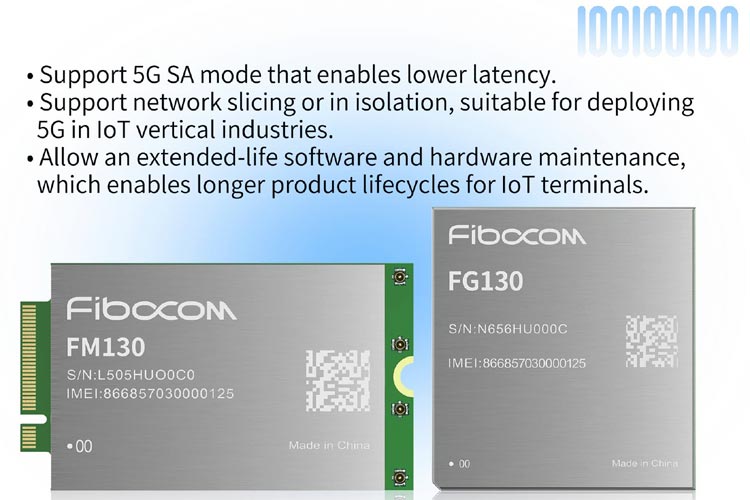New FG130 and FM130 5G Module Series to Advance 5G Deployment in IoT

Fibocom has launched 5G wireless modules FG130 and FM130 targeted to advance the deployment of 5G in the IoT vertical industries and expand the new market opportunities of 5G technology in the IoT sector. FG130 and FM130 wireless module series support global frequency bands of 5G NR Sub-6GHz in standalone (SA) only mode which enables lower latency and makes it suitable for real-time and near-real-time applications such as C-V2X and AR/VR. The Series features premium gigabit class performance, low power consumption, efficient heat dissipation and is a new generation of IoT solutions with high speed, powerful functions and excellent performance.
FG130 and FM130 modules are embedded with rich interfaces which allow flexible customization, which can help customers transit from LTE to 5G seamlessly based on their needs while reducing development costs. The modules are powered by the Qualcomm 315 5G IoT Modem and allow an extended-life software and hardware maintenance which enables longer product lifecycles for IoT terminals. FG130 and FM130 5G modules can be applied in use cases based on different characteristics and SLA (service level agreement) requirements, including private 5G networks, smart retails, smart energy, IoT (Industrial IoT), smart agriculture, construction, public venues, etc.
Benefits
-
Support 5G SA mode that enables lower latency.
-
Support network slicing or in isolation, suitable for deploying 5G in IoT vertical industries.
-
Allow an extended-life software and hardware maintenance which enables longer product lifecycles for IoT terminals.
Jeffery Torrance, senior vice president, product management, Qualcomm Technologies said that, “We are pleased to unveil our new 5G IoT solution which will help stimulate and scale the 5G IoT industry and enable the transitions needed for Industry 4.0. This solution will help create long-lasting devices and promote growth and expansion in the 5G IoT industry, allowing seamless integration for customers utilizing previous generations of connectivity.”









